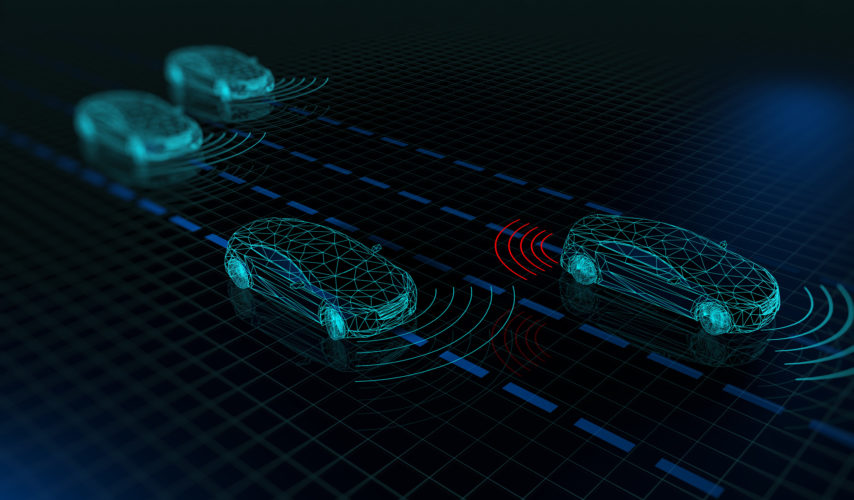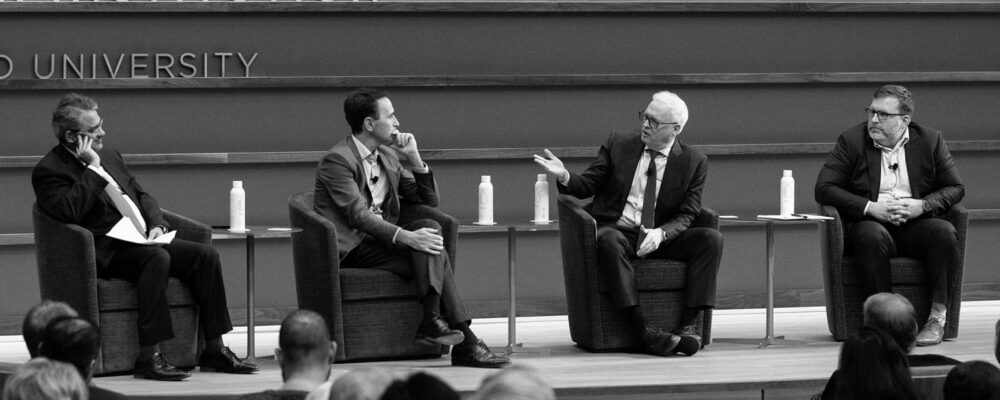The California Public Utilities Commission recently approved petitions from two taxi companies, Waymo and Cruise, to operate paid robo-taxi services around the clock in San Francisco. The first-of-its-kind move has been widely seen as a major step forward for fully autonomous vehicles and a springboard for similar driverless car rollouts in other cities.
Proponents say autonomous taxis are safer and more reliable than manned vehicles and will bring numerous safety, environmental and social benefits to communities. Meanwhile, news reports of robo-taxis blocking emergency vehicles, getting stuck in cement, and otherwise causing havoc on city streets are buttressing the arguments of opponents, who say the technology is not ready for wide-scale use—and that it will negatively impact jobs and have other deleterious effects on society.
While San Francisco and other cities grapple with the pros and cons of this new era in transportation, legal scholars such as Stanford Law School’s Robert Rabin, the A. Calder Mackay professor of law, are focusing on the tort liability system and how it will evolve to compensate victims of autonomous vehicle accidents.
Here, Rabin discusses the eventual tilt toward more product liability claims and fewer negligence claims, the new liability framework he proposed in 2018, as well as other tort law issues around fully autonomous vehicles.
If driver negligence is a major cause of auto liability cases now, and presumably human driver negligence will eventually become a much smaller piece of the liability pie, how is the law evolving to compensate people who are injured or sustain property damage due to autonomous vehicles?
While driver negligence is the basis for liability in the overwhelming majority of auto accident cases, the considerably smaller number of product defect claims against auto manufacturers receive the lion’s share of attention in the media. So, there will be far fewer accident claims in a roadway dominated by autonomous vehicles, and a much higher proportion of product defect claims. Technical risk/utility issues will have higher priority than garden-variety questions of due care. One must keep in mind, however, that we are peering into a relatively distant future. I predict that conventional vehicles will be prominent on the roadways for many years to come.
With software and other technology increasingly in the “driver’s seat,” will it be easier to assign liability in auto accidents by simply looking at the data or recordings?
To the contrary, it will be more difficult to determine “what went wrong,” if anything, when the issue is whether a Reasonable Alternative Design (RAD) to the software system existed. RAD is what is currently used in the tort system to evaluate design defects. The plaintiff is required to show the existence of a feasible, reasonable alternative design whose adoption could have reduced, or prevented, the harm. This will be a highly technical question. Moreover, still greater complexity is generated by the phenomenon of machine learning—that is, automated updates in the system that were, or might have been, utilized. Judges and juries are not well-equipped for assessing those sorts of issues.
In 2018, you co-authored a law review article in which you argued for an entirely new liability framework once autonomous vehicles become the dominant mode of transport on our streets. Can you summarize that?
In Automated Vehicles and Manufacturer Responsibility for Accidents: A New Legal Regime for a New Era, which I co-write with Kenneth Abraham at the University of Virginia, we proposed replacing the tort remedy with a no-fault system, similar to the workers’ compensation model. A revolution in transportation will require new ways of thinking about how to compensate victims, just as the Industrial Revolution ushered in a new era in how to compensate victims of workplace accidents. Our arguments remain theoretical for the time being, as such a system should only come into effect once a substantial proportion of vehicles on the roads are autonomous.

The idea stems largely from the difficulty of determining product defects in autonomous vehicle-related accidents. Because the contributions of drivers and other third parties will become minimal in these accidents, the focus will be on highly complex alleged engineering failures, as I mentioned. At this point, RAD, which is currently used in the tort system to evaluate design defects, will likely become unhelpful. Our idea was to replace tort liability with Manufacturer Enterprise Responsibility (MER), a uniform federal program that would be a manufacturer-financed, strict responsibility bodily-injury compensation system, administered by a fund created through assessments levied on HAV manufacturers.
Are regulators moving too quickly with regard to approving fully autonomous cars and is the current legal framework sufficient to deal with the liability issues presented?
We live in a culture where technology is inextricably intertwined with political considerations. It can be confidently predicted that a relatively small number of AV-responsible incidents causing serious personal injury and/or major traffic interference will lead to a relatively hasty retreat by regulators, or perhaps a retreat initiated by the technology companies themselves.
In terms of the liability issues and how they might be evolving, is there a significant difference between cars in autonomous mode (with a person sitting in the traditional driver’s seat) and those that are fully autonomous?
This is a midway course between autonomous cars and conventional vehicles. In this hybrid category, one would expect that a significant number of the cases will continue to rely on traditional negligence theory, claiming inattentiveness on the part of the “driver.”
You have had a long scholarly interest in historical and doctrinal developments in tort law, especially in the health and safety arena. Can you comment on that interest generally and explain why this is an exciting time for you?
The dynamics of injury law have held special fascination for me. I’ve seen the boundaries of tort law (and alternative compensation schemes) tested by tobacco disease, mass disasters (like 9/11), asbestos, opioids, and now, perhaps, a mass transit revolution. It makes life interesting for a torts enthusiast.
An expert on torts and legislative compensation schemes, Robert L. Rabin is highly regarded for his extensive knowledge of the history and institutional dynamics of accident law. He is a prolific author on issues relating to the functions of the tort system and alternative regulatory schemes and is the co-editor of a classic casebook on tort law. He has served as advisor on the American Law Institute’s Restatement of the Law (Third) of Torts (2012), and Restatement of the Law (Third) of Products Liability (1998). He was also the program director for the Robert Wood Johnson Foundation Program on Tobacco Policy Research and Evaluation, as well as a co-reporter for the American Law Institute Project on Compensation and Liability for Product and Process Injuries, and reporter for the American Bar Association Action Commission to Improve the Tort Liability System. He has been a member of the Stanford Law School faculty since 1970.
“Stanford University, officially Leland Stanford Junior University, is a private research university in Stanford, California. The campus occupies 8,180 acres, among the largest in the United States, and enrols over 17,000 students.”
Please visit the firm link to site






